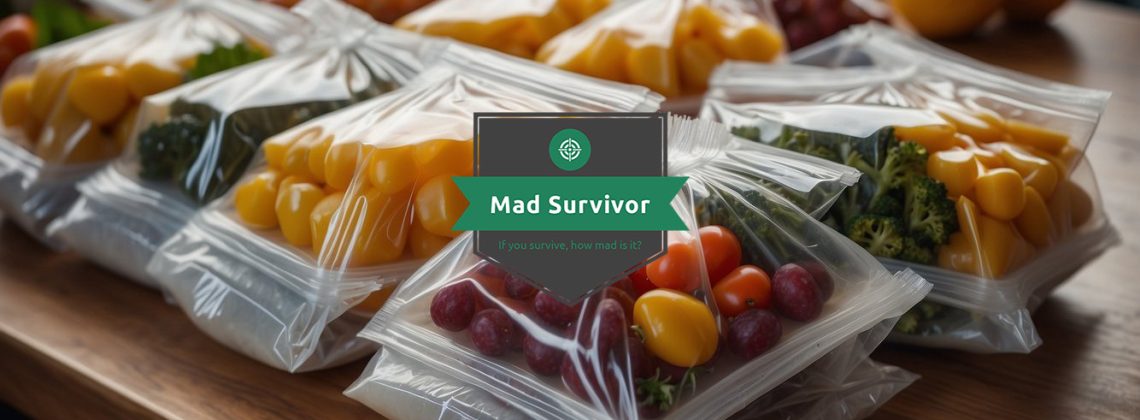
Vacuum sealing is a fantastic way to extend the shelf life of your foods. By removing air from the packaging, vacuum sealing slows down the spoilage process. This means your food remains fresher for a longer period compared to traditional storage methods. It’s a convenient and cost-effective way to manage your groceries and meal prep, giving you the comfort of knowing you’ll have fresh food ready when you need it.
In your freezer, vacuum sealed foods last considerably longer than their non-sealed counterparts. While freezer burn and dehydration are common issues with frozen foods, vacuum sealing protects against these, allowing you to enjoy their natural flavor and texture even after long storage periods. Fresh meats that would normally last six months in the freezer can remain good for up to a couple of years when vacuum sealed. Your pantry items and refrigerator staples also benefit from vacuum sealing, with shelf lives being extended several times over. Lets run through all this in more detail…
Jump To Section
- Understanding Vacuum Sealing
- Shelf Life of Vacuum Sealed Foods
- Factors Affecting Vacuum Sealed Food Longevity
- Best Practices for Vacuum Sealing
- Storage Guidelines for Vacuum Sealed Foods
- Safety Tips for Consuming Vacuum Sealed Foods
- Identifying Spoilage in Vacuum Sealed Foods
- The Science Behind Vacuum Sealing and Preservation
- Comparing Vacuum Sealing to Other Preservation Methods
- Cost-Benefit Analysis of Vacuum Sealing at Home
- Environmental Impact of Vacuum Sealing
- Conclusion

Understanding Vacuum Sealing
Vacuum sealing is a method that extends the shelf life of food by removing air from the package before sealing it. This process reduces oxygen levels, which slows down the oxidation of food, thereby preserving freshness and quality.
What Happens When You Vacuum Seal?
- Oxygen is removed from the food container.
- Growth of mold and bacteria is inhibited.
- Freezer burn is prevented during freezer storage.
Benefits:
- Increased Shelf Life: Your food can last significantly longer compared to traditional storage.
- Flavor Preservation: Taste and texture are protected over time.
Even foods like flour can be vacuum sealed to last longer. When you vacuum seal flour, make sure the bag is completely sealed with no leaks. Then, store it in a cool, dry place to prevent moisture from affecting the flour.
By using vacuum sealing, you can expect flour to maintain its quality for a much longer period than it would with standard storage methods. Keep in mind that while sealing greatly extends shelf life, it’s also essential to store your vacuum-sealed items correctly to maximize the benefits.
Shelf Life of Vacuum Sealed Foods
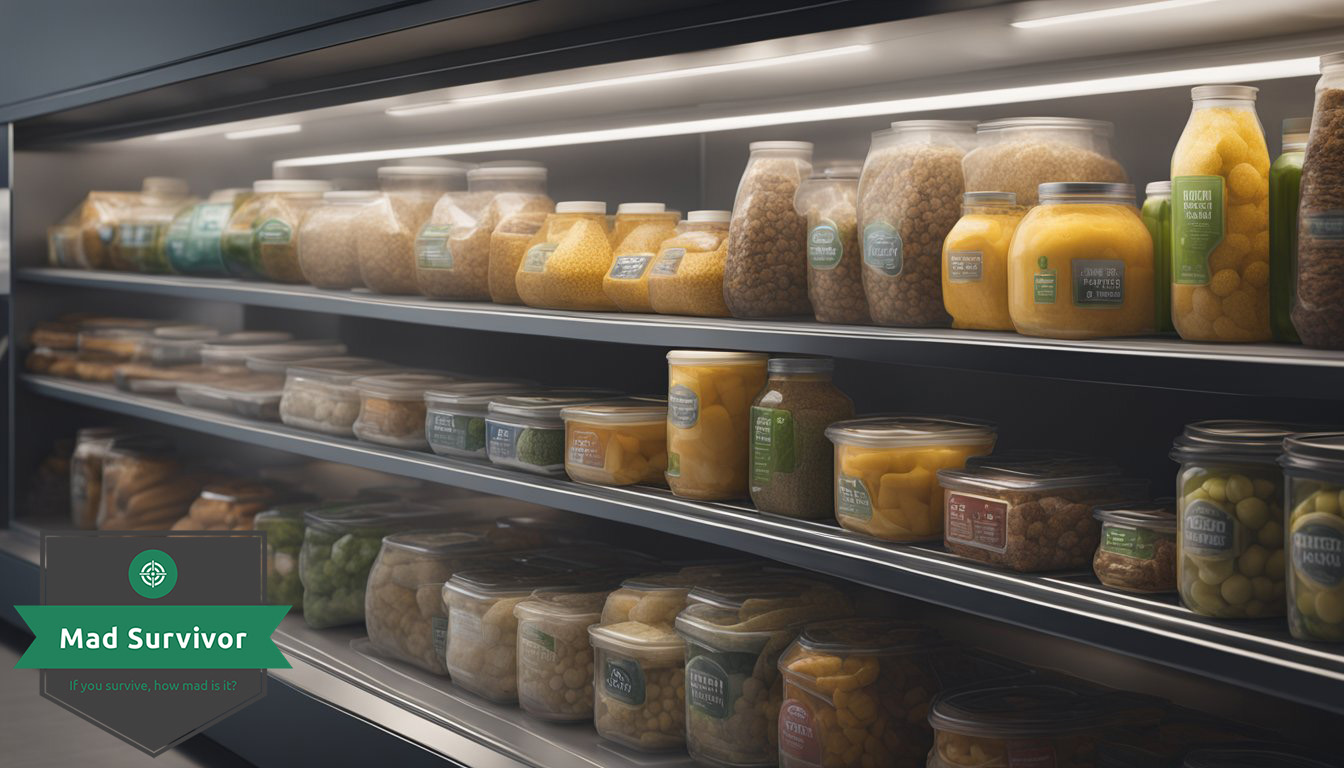
When you vacuum seal your foods, here’s what you can expect for various food groups.
Meat and Poultry
- Beef, Pork, and Lamb: In the freezer, your vacuum sealed red meats can last from 2 to 3 years.
- Poultry: When vacuum sealed and stored in the freezer, poultry can stay fresh for up to 2 to 3 years.
Fruits and Vegetables
- Berries: Expect them to last 2 to 3 years in the freezer when vacuum sealed.
- Other Fruits & Vegetables: Most will maintain freshness for 9 to 14 months in the freezer.
Dry Goods and Grains
- White Rice & Pasta: Vacuum sealed, these can last for about 2 to 3 years at room temperature.
- Flour & Sugar: Can be stored for up to 1 to 2 years in a pantry if vacuum sealed.
Dairy Products
- Cheese: Hard cheeses when vacuum sealed can last for 4 to 8 months in the refrigerator.
- Milk: You can extend the shelf life to 1 to 2 weeks in the refrigerator when vacuum sealed.
Factors Affecting Vacuum Sealed Food Longevity

When preserving food through vacuum sealing, several key factors influence how long your food will maintain its quality:
Type of Food: The inherent characteristics of the food you’re sealing are fundamental. For example, meats and fish typically last 2-3 years in the freezer, while fruits and vegetables can retain quality for 1-2 years.
Storage Temperature: Freezer storage can extend the life of your vacuum-sealed food up to 2-3 years, while refrigerated items remain fresh from 1-2 weeks to several months.
Seal Integrity: A perfect vacuum seal prevents oxygen from spoiling the food. Check for any air pockets or imperfect seals that could reduce storage life.
Initial Food Quality: Your food’s starting freshness affects how long it stays good after sealing. Always vacuum seal food at its freshest for maximum longevity.
Remember to always check for specific guidelines related to the food you’re sealing to ensure optimal preservation.
Best Practices for Vacuum Sealing
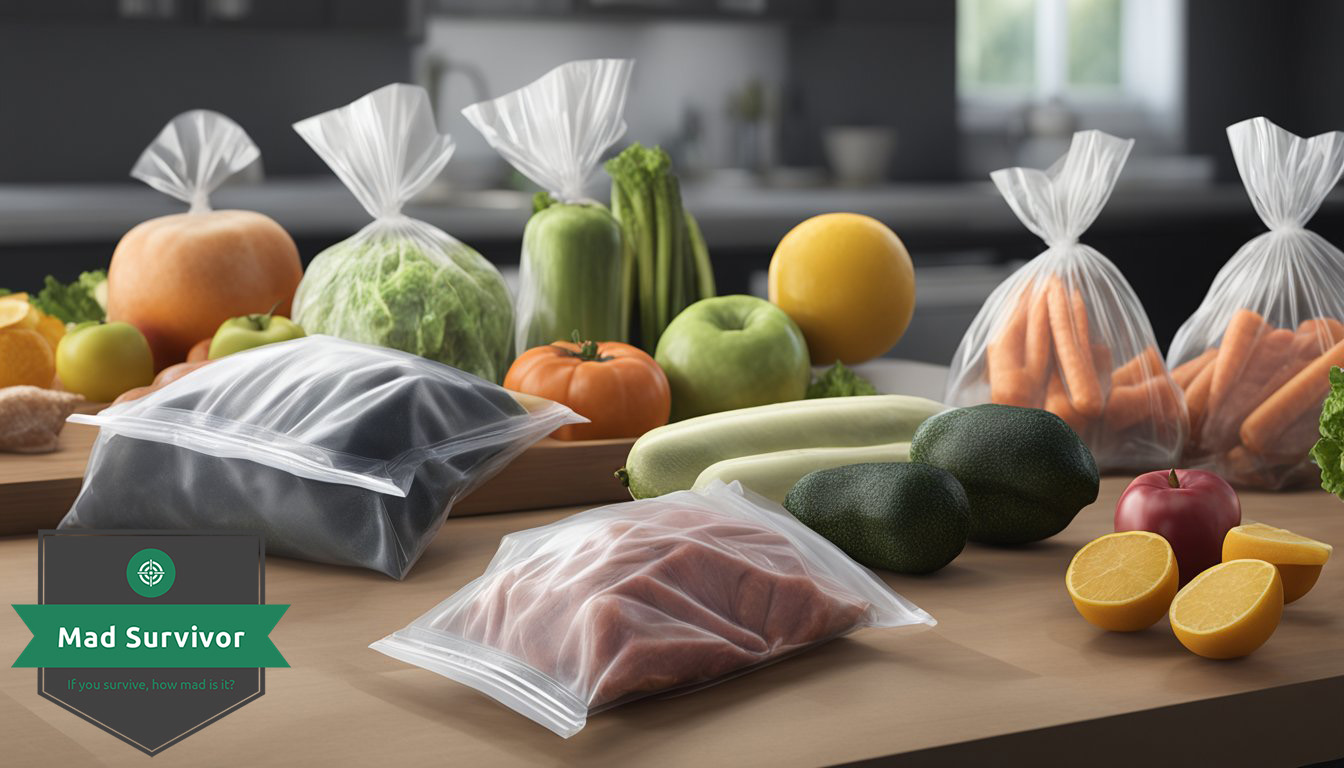
When you’re vacuum sealing food, your goal is to extend its shelf life while maintaining quality. Ensure your vacuum sealer is clean and functioning properly before starting. Select high-quality, puncture-resistant bags compatible with your sealer to avoid tears.
Prep Your Food
- Wash and dry fresh produce thoroughly to prevent mold growth.
- Pre-freeze items like meats and berries to keep their shape and avoid crushing.
- Cut food into usable portions to make thawing easier.
Sealing Process
- Leave adequate space at the top of the bag before sealing to allow for a strong vacuum seal.
- Double-seal your bags if your machine allows, adding extra protection against air ingress.
Labeling
- Always label your sealed packages with the date and contents for inventory management.
- Use a permanent marker to ensure it doesn’t fade over time.
Storage
- Store your vacuum-sealed food in a cool, dark place if unfrozen for pantry items.
- For refrigerated or frozen items, ensure they’re placed in an area that maintains a consistent temperature.
Remember, food quality at the time of sealing is important— vacuum sealing cannot improve the quality of food, only preserve it. By following these tips, you’ll help ensure your food stays fresh for as long as possible.
Storage Guidelines for Vacuum Sealed Foods
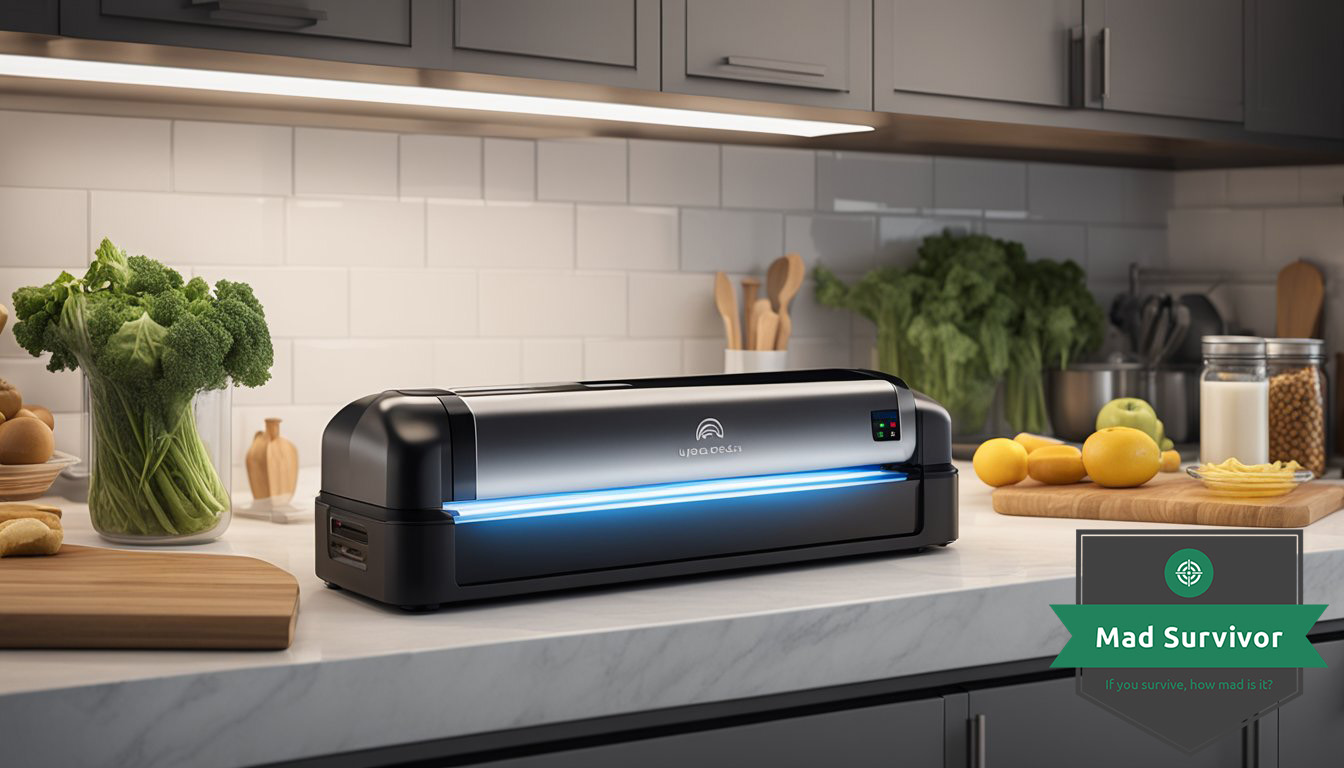
Here’s how you can best store your vacuum-sealed items to ensure safety and freshness:
In the Freezer:
Ensure your freezer is at a consistent temperature of 0°F (-18°C) or below for optimal food preservation.
In the Refrigerator:
Keep your fridge’s temperature at below 40°F (4°C) to retain the vacuum-sealed food’s freshness.
At Room Temperature:
Store vacuum-sealed pantries in a cool, dry place away from direct sunlight.
Here’s a handy reference table:
Remember, these are general guidelines. Always mark your packages with the sealing date to keep track of their storage time.
Safety Tips for Consuming Vacuum Sealed Foods
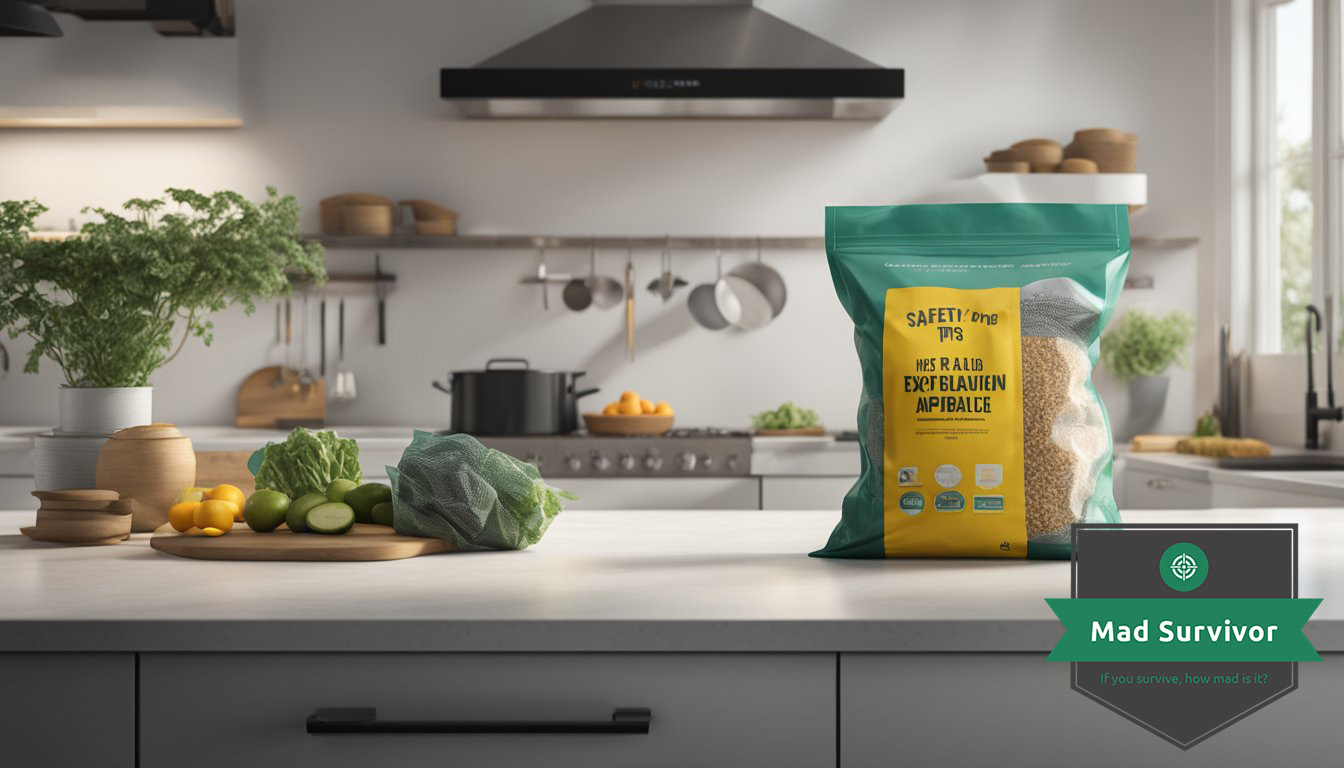
Here are some friendly tips to ensure that your vacuum-sealed delicacies remain safe and enjoyable:
Check Seals Regularly: Periodically inspect the seal on your vacuum-sealed foods. If the seal has broken or air has entered the bag, the food may no longer be safe to eat.
Observe Storage Times: Store your food according to the recommended times. While vacuum sealing can extend the shelf life, it’s not indefinite. For example, vacuum-sealed fresh meat can typically last up to 2-3 years in the freezer, but always verify your specific product guidelines.
Refrigerate or Freeze Promptly: After vacuum sealing your food, place it in the refrigerator or freezer immediately. This inhibits bacterial growth and maintains freshness.
Thoroughly Cook Thawed Foods: When you’re ready to eat your vacuum-sealed food, ensure it’s thoroughly cooked. Some bacteria can survive freezing temperatures, so cooking properly is essential.
Keep It Clean: Always handle food with clean hands and use clean surfaces and utensils. Cross-contamination can occur if raw and cooked foods come into contact.
Follow Safe Thawing Practices: Thaw frozen, vacuum-sealed food in the refrigerator or in cold water, never at room temperature.
Remember, these steps will help you enjoy the shelf-life benefits of vacuum sealing while minimizing any potential risks. Enjoy your vacuum-sealed treats with the confidence that comes from following these simple safety tips!
Identifying Spoilage in Vacuum Sealed Foods
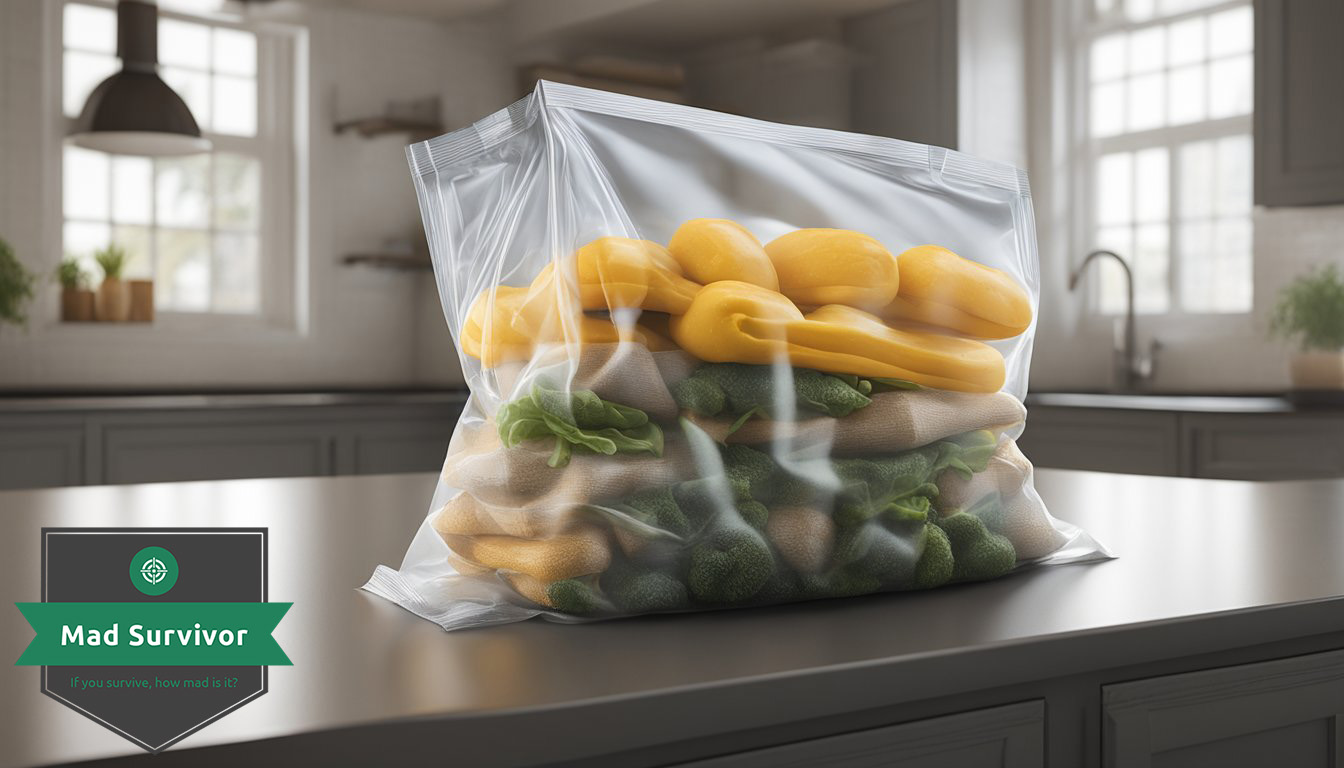
When you’re assessing vacuum sealed foods for spoilage, it’s important to be methodical. Spoiled foods can cause illness, so watch for these signs even if the food hasn’t reached its supposed expiration date.
Visual Cues:
- Discoloration: If the food looks different in color compared to when it was sealed, it might be a sign of spoilage.
- Texture Changes: Sliminess or the presence of mold indicates the food should not be consumed.
Smell:
- An off-odor or unusual smell is one of the most telling signs of spoilage. Trust your nose; if something smells wrong, it’s best to err on the side of caution and discard the food.
Packaging Integrity:
- Check the vacuum seal. If the package is bloated or the seal is broken, air could have entered, promoting bacterial growth.
- Leaks or punctures in the packaging can also compromise the food’s shelf life and safety.
Taste:
- If you’ve passed the initial checks and decide to sample the food, any sour or off flavors are immediate indicators that the food has gone bad.
Safety Tips:
- Always inspect vacuum sealed foods before and after thawing.
- Do not taste food you suspect is spoiled.
- When in doubt, it’s safest to discard any food that might be spoiled.
Even though vacuum sealing significantly extends shelf life, it does not make food last indefinitely. Stay attentive for these warning signs to keep you and your loved ones safe.
The Science Behind Vacuum Sealing and Preservation
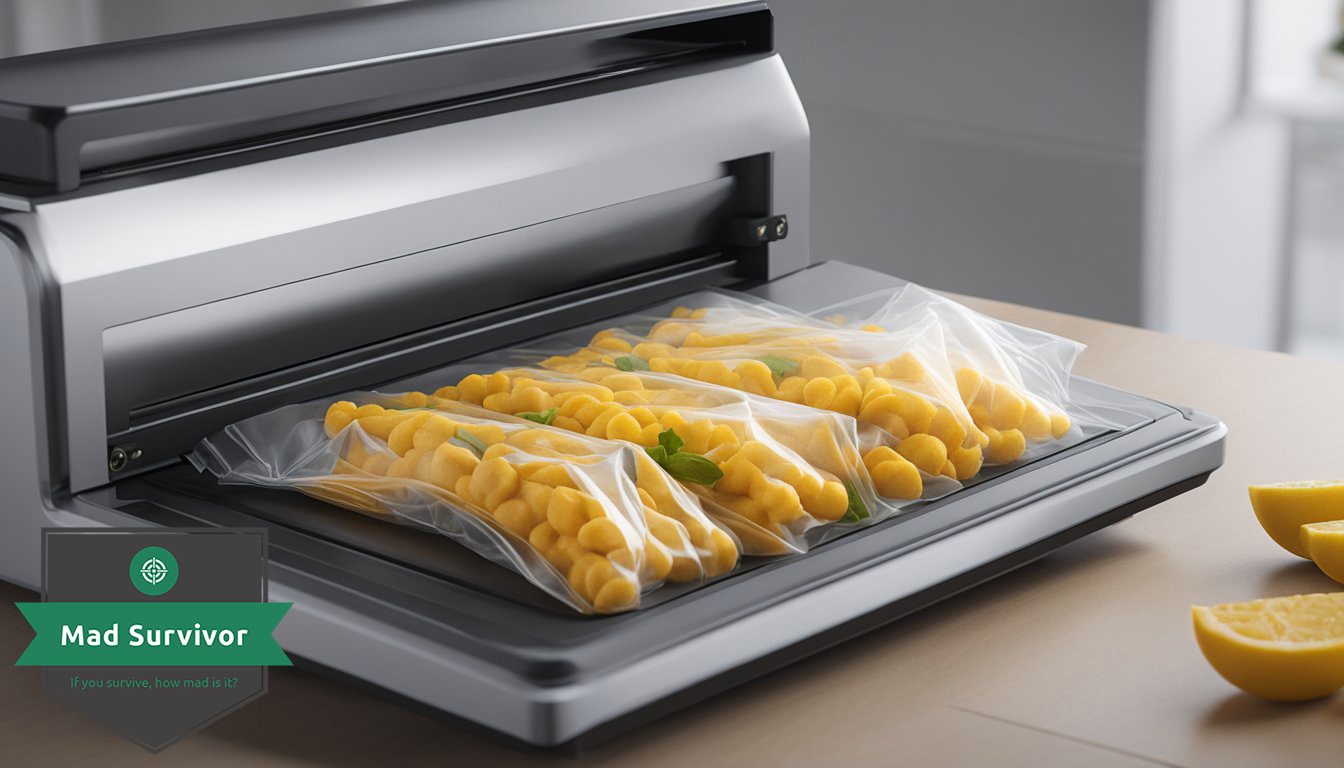
Vacuum sealing removes air from the package, and with it, much of the oxygen that bacteria, mold, and yeast need to grow. Think of it as placing your food in a protective bubble that slows down the natural degradation process.
Why is oxygen a problem for food storage?
- Oxygen fosters the growth of microorganisms.
- It can cause freezer burn in frozen foods.
- Oxygen exposure leads to oxidation, which affects food quality.
By eliminating air and sealing the food in an airtight environment, you’re effectively putting freshness on pause. Here’s what happens when you vacuum seal:
- Microorganism Growth is Inhibited: The lack of oxygen impedes bacteria growth, so foods remain safe to eat for a longer period.
- Delay Oxidation: Fats and oils in food won’t go rancid as quickly because the oxygen they’d normally react with isn’t there.
- Prevent Freezer Burn: With less air around, food is less likely to dehydrate or get freezer burn.
Remember, vacuum sealing isn’t magic – it’s science. Your food’s longevity will also depend on the temperature at which it’s stored. Keep your vacuum-sealed goods in the right place:
- Freezer: for long-term storage of meat and prepared meals.
- Refrigerator: for fresh produce, cheese, and deli meats.
- Pantry: for grains, nuts, and dried fruits.
By using your vacuum sealer effectively, you’re taking an active step in managing your food preservation smartly and efficiently.
Comparing Vacuum Sealing to Other Preservation Methods
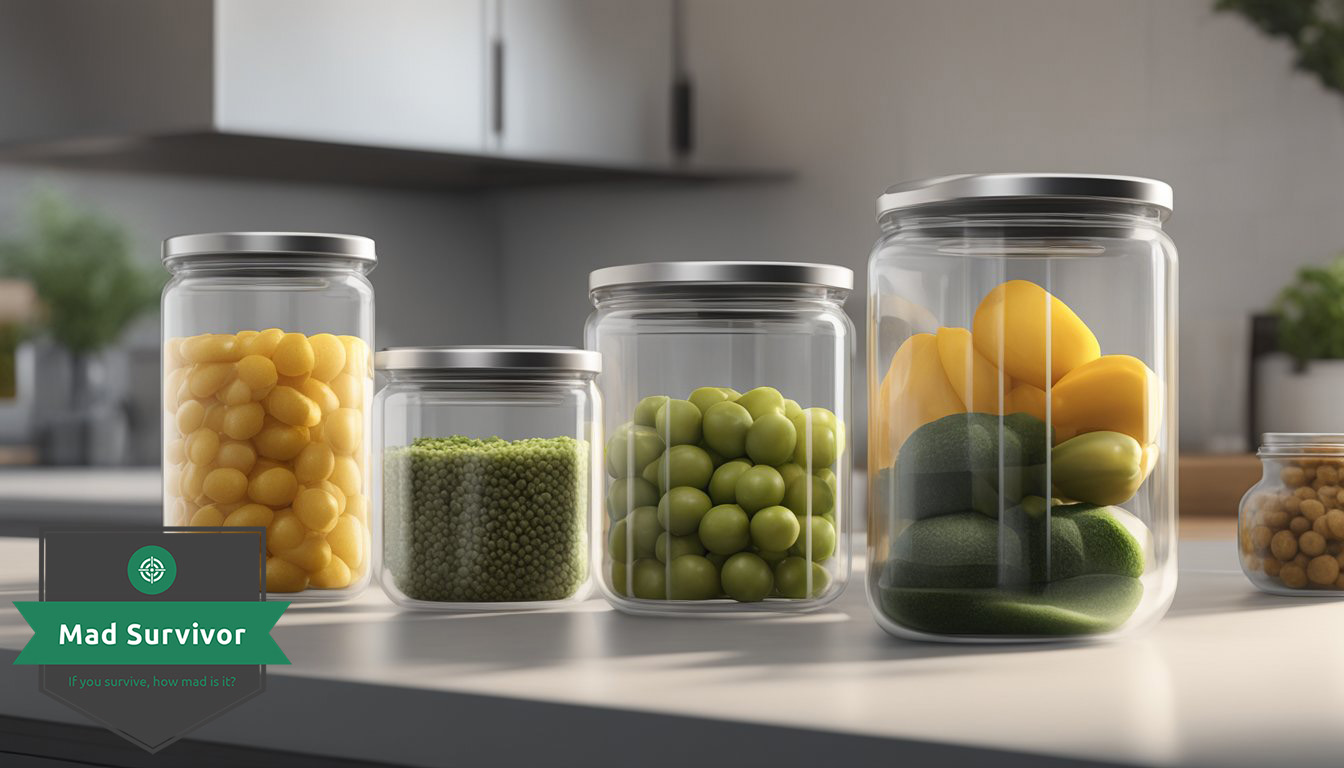
When you’re looking to extend the shelf life of your food, vacuum sealing is a great option to consider. Let’s take a look at how it stacks up against other common methods:
| Method | Description | Shelf Life (Average) |
|---|---|---|
| Vacuum Sealing | Removes air to prevent bacterial growth. | Fridge: 1-2 weeks, Freezer: 1-2 years |
| Freezing | Lowers the temperature to halt bacteria. | Fridge: Not applicable, Freezer: 6-12 months |
| Refrigeration | Cools food to slow down deterioration. | Fridge: Several days, Freezer: Not advisable |
| Canning | Food is heated and sealed to prevent spoilage. | Pantry: 1-5 years, Fridge/Freezer: Not needed |
While canning can provide a long shelf life, vacuum sealing coupled with freezing significantly retains your food’s texture, flavor, and nutritional value. Unlike simple refrigeration, which offers a relatively short shelf life, vacuum-sealed foods in the fridge last up to two weeks. And for most items in your freezer, vacuum sealing can maintain quality for years, far surpassing conventional freezing methods.
Keep in mind that the longevity of your foods will also depend on the initial freshness and type of food. For instance, vacuum-sealed raw meats preserve well in the freezer due to the lack of oxygen, thereby slowing down the spoilage process.
Remember, no matter which method you go for, proper initial handling and food safety practices are key to keeping your food fresh for longer periods.
Cost-Benefit Analysis of Vacuum Sealing at Home
When considering the economics of vacuum sealing food at home, you need to strike a balance between initial investment and long-term savings. Here’s a breakdown to help you understand where your money goes and what savings you can expect.
Initial Investment:
- Vacuum Sealer: You’ll need to purchase a vacuum sealer, with prices ranging from as low as $25 to over $200 for more sophisticated models.
- Sealing Bags: High-quality bags are crucial; they come in rolls or pre-cut sizes, typically costing $10-$30.
Benefit: Despite the upfront costs, vacuum sealers can pay for themselves if you buy food in bulk or on sale and seal for future use.
Ongoing Expenses:
- Maintenance: Sealers may need occasional maintenance, but this is usually minimal.
- Bags & Rolls: You’ll periodically need to replenish your bag supply. Opting for rolls might be more economical, as you can customize the length.
Benefit: Using your sealer means fewer food items wasted, ultimately leading to savings on your grocery bill.
Savings Over Time:
- Extended Shelf Life: Vacuum sealing dramatically extends food shelf life—up to 2-3 years in the freezer and 1-2 weeks in the fridge.
- Bulk Purchasing: Buy in bulk during sales and seal for later, saving money over time.
In summary, while your initial and ongoing expenses are an important consideration, your long-term savings can be substantial – thanks to prolonged food freshness and the ability to capitalize on bulk buying. Smart planning and regular use of your vacuum sealer yield the best financial outcomes.
Environmental Impact of Vacuum Sealing
When using vacuum sealing as a method of preserving your food, you’re influencing the environment in several ways, some beneficial and others potentially concerning. By extending the shelf life of your foods, you’re likely reducing food waste, which is a substantial contributor to greenhouse gas emissions when it decomposes in landfills.
Reduced Food Waste:
- Less Spoilage: With vacuum sealing, your food stays fresh longer, decreasing the frequency of disposing of spoiled food.
- Portion Control: You can vacuum seal individual portions, which helps in minimizing unnecessary leftovers that might otherwise be discarded.
However, the environmental footprint of vacuum sealing can be nuanced. The plastic bags used for vacuum sealing can be an environmental concern if they are not recyclable or biodegradable. It’s key to look for bags that have minimal ecological impact, either through recycling programs or by choosing bags made from sustainable materials.
Plastic Waste:
- Bag Type: Seek out recyclable or biodegradable vacuum seal bags to minimize pollution.
- Reuse Options: Reusing bags when possible can lower your environmental impact, though this must be done safely to avoid cross-contamination.
Remember, your choices in vacuum sealing products and practices can affect your overall environmental impact. Opting for eco-friendlier options helps in conserving resources and protecting the planet for future generations.
Conclusion
When you vacuum seal your food, you’re locking in freshness and extending the shelf life significantly. Keep in mind that the quality of the storage bags and the vacuum sealer itself play a crucial role in determining how long your sealed food will last. High-quality bags ensure a better seal and longer preservation. Remember, these are general guidelines. To ensure safety and quality, always label your sealed packages with the date and regularly check for any signs of spoilage before consumption. Happy storing!

Leave a Reply